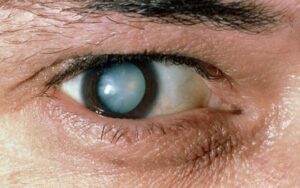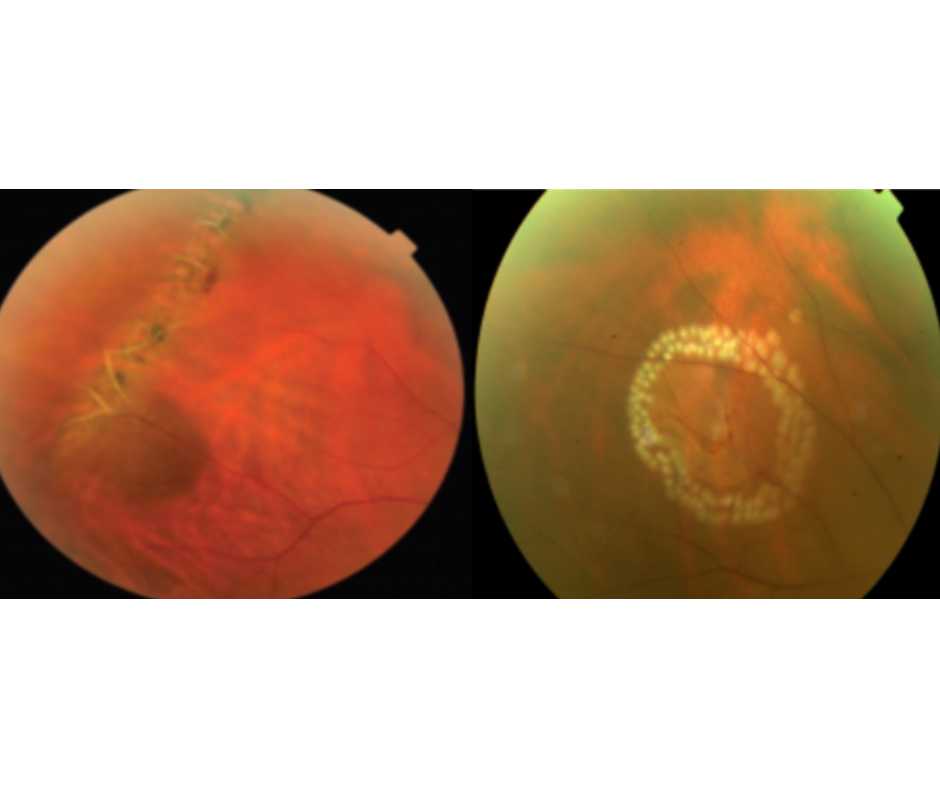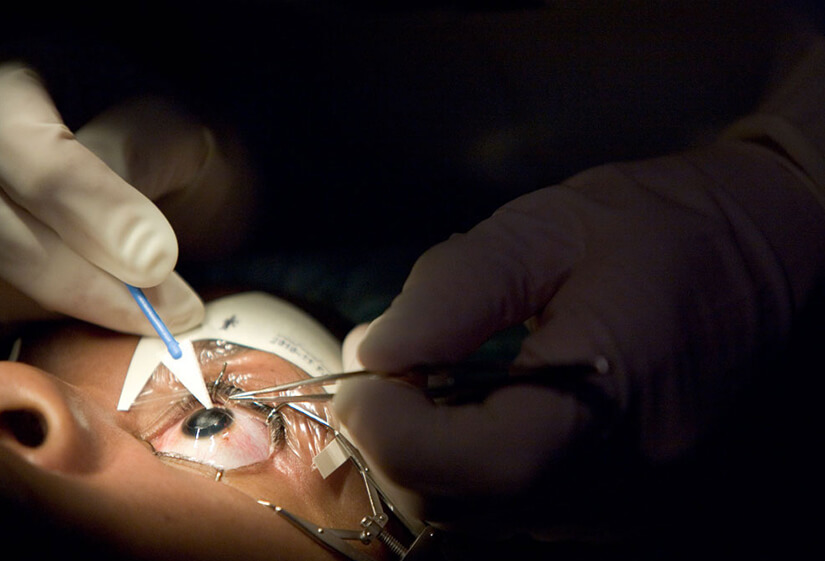Everything You Need to Know About Cataract Nuclear: Symptoms, Causes, Treatment, and Prevention
Cataract Nuclear are one of the most common types of cataracts, especially among older adults. This condition affects the central part, or nucleus, of the eye’s natural lens, causing it to become cloudy and opaque. As a result, vision becomes blurry and distorted, impacting daily activities like reading, driving, and enjoying clear vision. In this article, we will dive into the symptoms, causes, treatment options, and preventive measures for nuclear cataracts, helping you better understand this common eye condition.

What Are Cataract Nuclear?
A nuclear cataract specifically targets the central region of the lens, known as the nucleus. Over time, this area becomes clouded, leading to a gradual decline in vision. Unlike other types of cataracts, nuclear cataracts cause the lens to harden and turn yellowish, which can distort your vision. While aging is the primary cause, several other factors contribute to the development of nuclear cataracts, including genetics and lifestyle habits.
Symptoms of Nuclear Cataracts:
The symptoms of nuclear cataracts usually develop slowly over time, making them hard to notice initially. However, as the condition progresses, you may experience:
- Gradual Vision Decline: Vision becomes blurry, particularly when looking at distant objects.
- Difficulty Seeing at Night: Low-light environments may become challenging, making driving or walking at night difficult.
- Blurred or Hazy Vision: As the cloudiness increases, vision becomes more distorted and unclear.
- Changes in Color Perception: Colors may appear faded or yellowed due to the lens becoming opaque.
- Near Vision Problems: You may find it harder to read or perform close-up tasks as the cataract advances.
If you experience any of these symptoms, it’s essential to consult with an eye care professional to get a proper diagnosis and explore treatment options.
Causes and Risk Factors for Nuclear Cataracts:
Aging is the most significant cause of nuclear cataracts. As you age, the proteins in your lens begin to break down and clump together, leading to cloudiness. However, other factors can contribute to the development of nuclear cataracts, including:
- Genetics: A family history of cataracts may increase your likelihood of developing this condition.
- UV Exposure: Prolonged exposure to ultraviolet (UV) rays from the sun can accelerate cataract formation.
- Smoking: Smoking is a major risk factor for cataract development and other eye health issues.
- Medical Conditions: Diseases like diabetes and hypertension can increase the risk of cataracts.
- Medications: Long-term use of corticosteroids and other medications can contribute to cataract development.
- Eye Injuries: Trauma to the eye can trigger the formation of cataracts.
How Are Nuclear Cataracts Diagnosed?
Diagnosing nuclear cataracts typically involves a comprehensive eye exam conducted by an ophthalmologist or optometrist. During the exam, the doctor will use tools such as:
- Slit-Lamp Biomicroscope: This device provides a magnified view of the eye’s structures, helping the doctor identify cloudiness in the lens.
- Pupil Dilation: The doctor may use eye drops to dilate your pupils and gain a more detailed view of the lens.
This thorough examination helps the doctor assess the severity of the cataract and determine the best treatment approach.
Treatment Options for Nuclear Cataracts
The most effective treatment for nuclear cataracts is surgery. Cataract surgery is one of the safest and most common medical procedures worldwide, with a high success rate. Here’s what you can expect:
- Preoperative Evaluation: Your ophthalmologist will assess the severity of the cataract and conduct tests to determine the appropriate treatment.
- Surgical Procedure: The cloudy natural lens is removed and replaced with an artificial intraocular lens (IOL), which restores clarity to your vision.
- Recovery: The recovery process is typically short, with most patients experiencing significant improvements in their vision within days to weeks. Follow-up visits are necessary to monitor healing.
While cataract surgery is highly effective, it’s important to follow your doctor’s aftercare instructions to prevent complications and ensure a smooth recovery.
Preventing Nuclear Cataracts: Tips for Eye Health
Although aging and genetics play a significant role in cataract formation, there are steps you can take to reduce your risk or slow the progression of nuclear cataracts:
- Protect Your Eyes from UV Rays: Wear sunglasses that block 100% of UVA and UVB rays to minimize UV exposure, which can accelerate cataract development.
- Quit Smoking: Smoking increases your risk of cataracts and other eye diseases, so quitting can help protect your vision.
- Maintain a Healthy Diet: A diet rich in antioxidants (like vitamins C and E) can protect your lens from oxidative damage and help delay cataract formation.
- Get Regular Eye Exams: Regular eye checkups are essential for early detection. Your eye care professional can spot cataracts before they significantly affect your vision.
By following these simple steps, you can protect your eye health and potentially reduce the risk of developing nuclear cataracts.
What to Expect After Cataract Surgery
For patients who undergo cataract surgery, the recovery process is usually straightforward:
- Post-Surgery Care: You may experience blurry vision immediately after surgery. This is normal and will improve over the next few days. Your doctor will prescribe eye drops to prevent infection and inflammation.
- Follow-Up Appointments: You’ll need to attend follow-up appointments to ensure your eye is healing properly and to check for any complications.
- Gradual Vision Improvement: Vision may take a few weeks to fully stabilize. Most patients notice significant improvements in vision shortly after surgery, but it may take some time for the eye to adjust.
- Resuming Normal Activities: Most patients can return to normal activities, including driving and working, within a few days to weeks after surgery.
Long-Term Outlook for Nuclear Cataract Surgery:
The outlook for patients undergoing cataract surgery is excellent. Over 95% of patients experience improved vision and enhanced quality of life after the procedure. The intraocular lens (IOL) provides long-lasting results, and most people enjoy clear vision for many years following surgery.
However, some individuals may need glasses for specific tasks like reading or driving at night, especially if they had a pre-existing refractive error. Overall, the benefits of cataract surgery far outweigh the potential need for corrective eyewear.
Author Details:
Dr. Sushruth Appajigowda holds a prominent position as a Cornea, Cataract, Glaucoma, and LASIK Surgeon in Bangalore. He serves as the chief Cataract and Refractive surgeon at Vijaya Nethralaya Eye Hospital, Nagarbhavi Bangalore. Renowned as one of the finest LASIK surgeons nationwide, he brings with him over 12+ years of experience across multiple LASIK platforms, including ZEISS, ALCON, SCHWIND, AMO, and Bausch and Lomb. Having successfully conducted over 5000 LASIK procedures, Dr. Sushruth holds the title of a Certified Refractive Surgeon and a Fellow of the All India Collegium Of Ophthalmology. Furthermore, he stands as a distinguished speaker at various National and International Forums, using his expertise to guide you in selecting the most suitable procedure based on your health requirements.

http://vijayanethralaya.com/link-in-bio/
Conclusion: Take Charge of Your Eye Health
Nuclear cataracts are a common age-related condition that can significantly impact your vision. However, with early diagnosis and timely treatment, cataract surgery can restore clarity and improve your quality of life. By adopting healthy habits such as protecting your eyes from UV rays, quitting smoking, and maintaining a nutritious diet, you can reduce the risk of developing cataracts.
If you notice any signs of nuclear cataracts, don’t wait—schedule an eye exam today. Early detection and treatment are key to preserving your vision and maintaining a high quality of life. Stay proactive about your eye health and take steps to protect your vision for years to come.
This article provides valuable information about nuclear cataracts, offering a comprehensive guide on symptoms, causes, diagnosis, and treatment. By incorporating SEO-friendly practices, this content aims to provide readers with the essential knowledge needed to understand and manage nuclear cataracts effectively.












